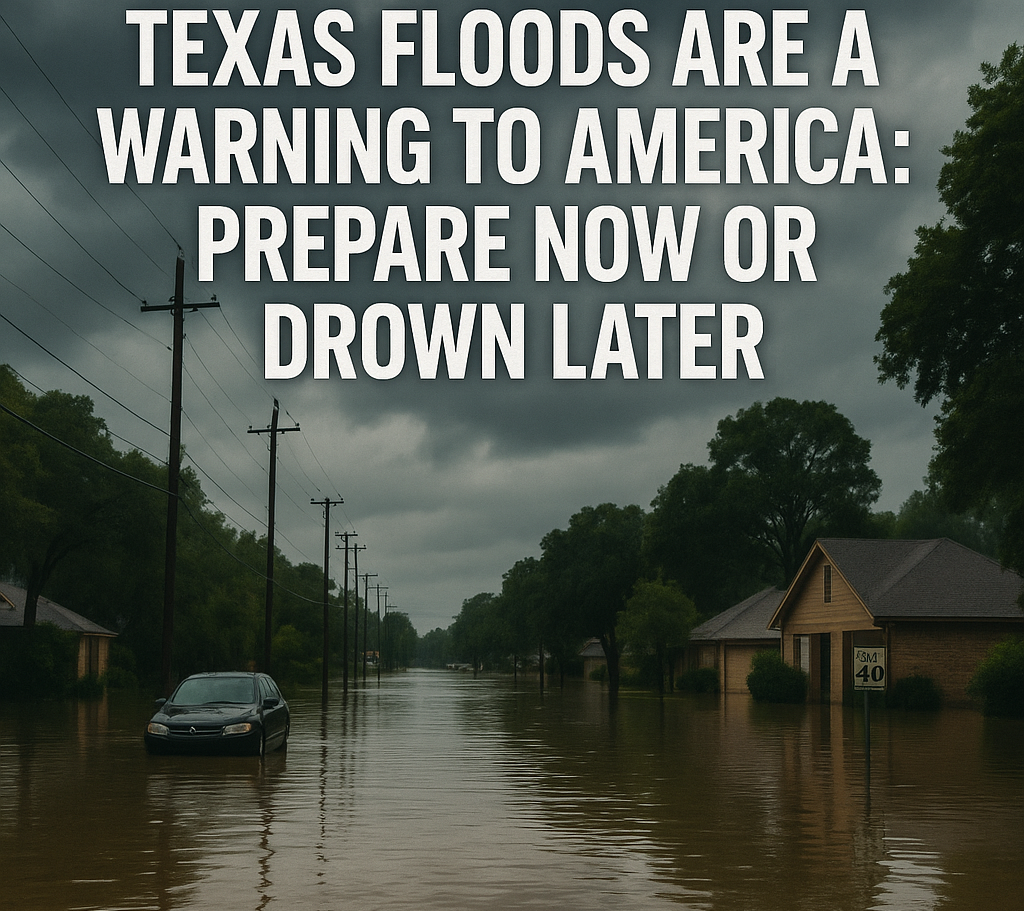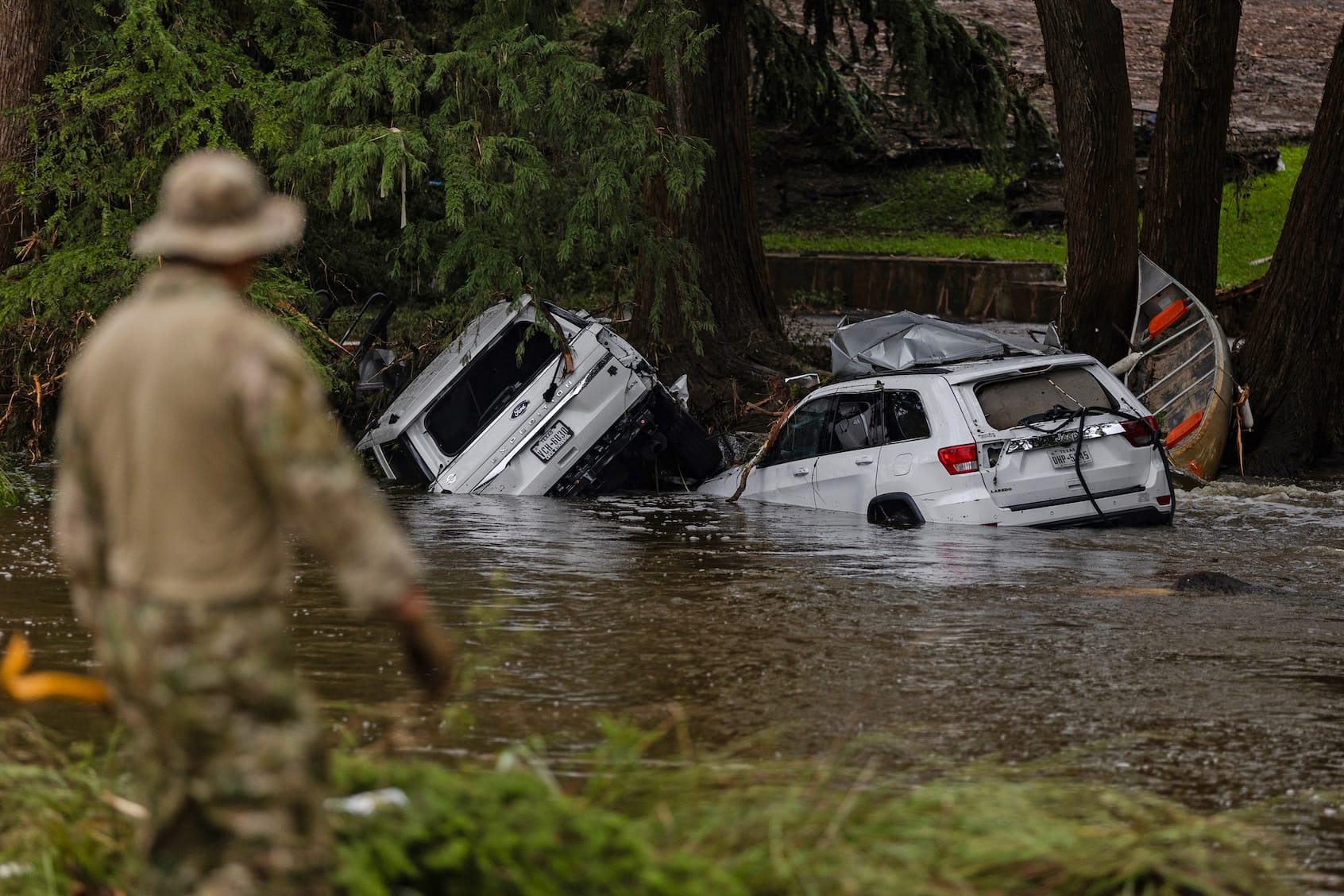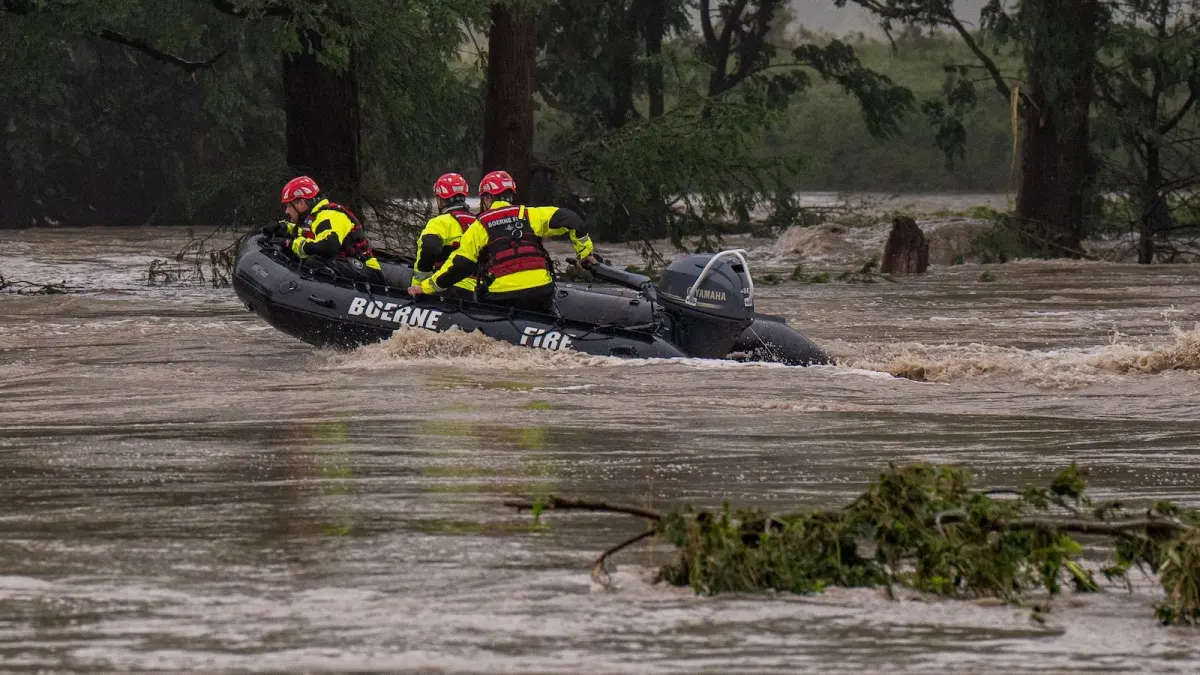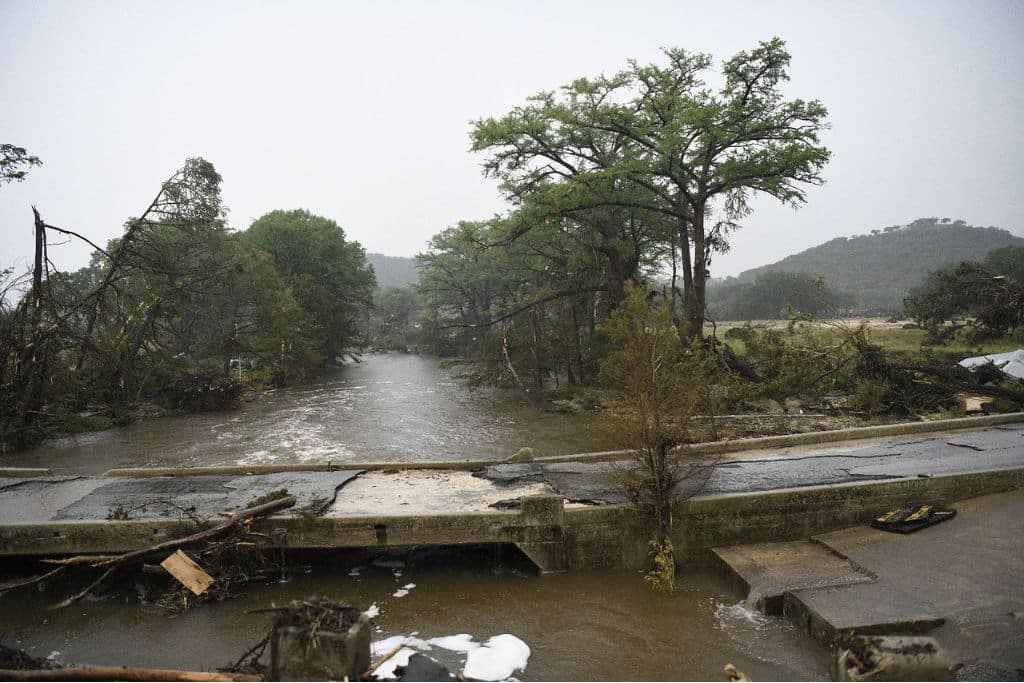How Climate Change Is Supercharging Floods in Texas and Across the U.S.
The 2025 Texas floods were no accident. Discover how climate change, urban planning failures, and political delays supercharged America’s flood crisis.

HILL COUNTRY, TEXAS, July 8, 2025
When the Guadalupe River rose more than 26 feet in under an hour this July, flooding neighborhoods in central Texas, it wasn't just a freak event. This was more than "just another flood." It was the result of decades of atmospheric warming, unchecked urban growth, ignored research, and a political system that struggles to address climate change. From Hill Country to Houston, America is facing a hard truth: flooding is now a common outcome of human neglect.
The Landscape Was Always Vulnerable, Now It’s a Trap
Central Texas has long been known as one of the most flood-prone areas in the United States. Dubbed "Flash Flood Alley," its hilly terrain channels rainwater into creeks and valleys with little warning. In the past, natural barriers like grasslands, wetlands, and loose soil absorbed heavy rainfall. Today, those buffers are almost gone. The land has been paved over and engineered for profit, not resilience.
Recent climate models from ClimaMeter reveal that the storms hitting Texas in July 2025 were not only 7% wetter than similar historical events but also at least 1.5°C hotter. This warmer air holds more moisture. So when it rains, it pours — heavily and continuously. Meanwhile, sea levels are rising along the Gulf Coast, pushing back against rivers and causing higher inland water tables. This combination of land features, water behavior, and climate changes has made natural drainage systems drivers of flooding.

Ignoring the Red Flags: A Timeline of Political and Scientific Apathy
Warnings about increased rainfall and urban flooding in Texas have been around for decades. In 2009, a NOAA-funded paper warned that the state’s drainage systems were not up to par for future climate conditions. That report was ignored. In 2015, assessments after Hurricane Harvey pointed out how Houston's uncontrolled growth into floodplains worsened the damage. Yet, the city continued approving new developments in those areas.
In 2022, the Texas legislature turned down a proposed $6 billion flood infrastructure bill. By 2023, flood damages had risen to over $20 billion. In 2024, NOAA’s budget faced cuts again, slowing down satellite launches and weakening early warning systems. Meteorologists like Shel Winkley from College Station expressed frustration that officials seemed unable to see what the data clearly indicated: storms were becoming more frequent, intense, and lethal.
“Forecasting helps no one if no one listens,” Winkley said during a post-flood review on KBTX.
The disconnect was not due to a lack of research; it was a lack of political foresight. Officials kept treating each flood as an exception rather than a growing trend.
The outcome? Emergency declarations instead of long-term solutions.
The Cost of Building Wrong: How Urban Planning Became a Catalyst for Disaster
Cities like Houston, Austin, and San Antonio were designed to grow, not withstand flooding. Between 1990 and 2020, Houston lost nearly 25,000 acres of wetlands — natural barriers that could have absorbed billions of gallons of floodwater. In their place, there are now parking lots, subdivisions, malls, and industrial parks. Each new hard surface meant less space for rain, forcing it into storm drains and basements.
And those storm drains? Most were built in the 1960s and 70s, when a "100-year storm" had a different meaning. Today, those systems struggle against what meteorologists call "rain bombs" — sudden heavy bursts of rain that deliver a month’s worth of water in just a few hours.
In San Antonio, flood maps haven’t been updated since 2011. As the city expanded into new suburbs, planners relied on outdated water management models. The result was tragic this June when flash floods killed 13 residents, leading to urgent calls for updated zoning laws and including climate science in city regulations.

Flooding as a Form of Social Injustice
While floods submerge neighborhoods indiscriminately, the human toll is not equal. Lower-income families, often Black and Latino, usually live in the most flood-prone areas — not by choice, but by systemic design. These communities often find themselves near industrial areas, highways, or low-lying lands that others would avoid. When floods hit, these neighborhoods are inundated not only with water but also with runoff from chemical plants and waste facilities.
Take Port Arthur, Texas, after the July floods, thousands of residents discovered their homes were contaminated not just with water but with benzene and heavy metals. These families had no flood insurance, and FEMA assistance was delayed by weeks. Temporary housing was miles away from their schools and jobs, and many may never return.
Data from Climate Central indicates that over 25% of U.S. households located in coastal or lowland areas face three or more risk factors: lack of insurance, mobility issues, and limited English skills. These challenges add up, turning what could be temporary displacements into long-term homelessness and trauma.
A System That Responds Too Late, If At All
When disaster strikes, people look to FEMA. However, the federal agency, overwhelmed by numerous climate-related emergencies, often takes a long time to respond. Applications for aid can take months, and insurance claims are often denied over technicalities. New policies like FEMA’s “Risk Rating 2.0” have made flood insurance unaffordable for many, especially in places like eastern Texas.
Meanwhile, state governments struggle to work with overwhelmed city departments. After the San Antonio floods, local hydrologists called for a thorough review of stormwater systems. However, budget limitations and political conflicts delayed any real action.
Private insurers have largely withdrawn. In Harris County, premiums have doubled since 2021, leading many to go without insurance. The market has determined that flooding is too risky, leaving ordinary people to take care of themselves.

A Dangerous Misconception: The Myth of the 'Natural' Disaster
Language is important. When media and officials label floods as “natural disasters,” they hide the real causes. These floods are not acts of God. They result from decades of policy decisions — or indecision—worsened by racism, deregulation, and short-term profit motives.
The term "100-year flood" has lost its meaning in Texas, where cities like Houston have experienced several so-called “500-year floods” in less than ten years. Zoning laws have not kept up. State legislatures still issue building permits in vulnerable areas. Environmental regulations are weakened to satisfy developers, allowing short-term growth at the expense of long-term safety.
As journalist Emily Atkin puts it, “Floods are not natural disasters. They’re political decisions with water as the weapon.”
Looking Beyond Our Borders: What the Netherlands and Japan Got Right
Other countries face similar water challenges and are responding with much better planning.
In the Netherlands, much of the country is below sea level, so officials have invested billions in adaptable infrastructure. The Dutch don’t just build levees — they create floating neighborhoods, designated flood plains, and canal systems that work with urban life.
Their strategy, "Room for the River," changes the approach. Instead of fighting water, they design cities to live alongside it.
In Tokyo, a vast network of underground flood tunnels known as the G-Cans Project redirects rainwater beneath the city, protecting above-ground infrastructure from damage. These innovations aren’t just engineering feats — they show long-term political vision.
In contrast, Texas relies on outdated levees and a mix of drainage rules. The difference isn't geography; it's governance.
An Economy Submerged: The Toll of Floods on Wealth and Inequality
After a disaster, recovery is not just about rebuilding homes. It’s about restoring lives, schools, transportation, and local economies. Yet the current financial system often makes suffering worse.
Wealthier residents usually bounce back quickly, using savings, private insurance, or moving away. Poorer residents — especially renters — face evictions, job loss, and ongoing instability. This creates what economists call “climate gentrification,” where flood-damaged neighborhoods are bought, rebuilt, and sold to wealthier buyers, displacing original residents for good.
At the same time, federal aid tends to favor richer counties. A ProPublica analysis in 2024 found that 40% of FEMA disaster relief funds went to areas with median household incomes over $70,000, while low-income communities were often left waiting or denied help altogether.

What’s Really at Stake: A Test of American Governance
This crisis is about more than climate. It's a test of American governance — whether this country can change quickly enough to survive the 21st century.
The proposed “Flood Ready Infrastructure Act,” which would set national standards for levee inspections, zoning reforms, and tax breaks for green infrastructure, remains stalled in Congress. Real estate lobbies and anti-regulation lawmakers argue that such policies would harm growth and local control.
But what they fail to see is that unchecked growth is already costing us more. In damages, in lives, in trust within communities. Climate resilience is no longer an option — it’s vital for our survival.
From Disaster to Design — The Blueprint for Moving Forward
So what can be done?
We need bipartisan investment in modern flood infrastructure. This includes permeable pavements in cities, smart stormwater tunnels under highways, sponge parks in flood-prone areas, and green corridors that serve as both recreational spaces and water management systems.
Insurance policies must be changed to protect, not penalize, at-risk communities. FEMA needs more funding and quicker response tools. Zoning boards must stop allowing developments in high-risk areas, even when it is politically difficult.
But beyond policies and programs, we need a shift in culture: from short-term thinking to responsibility. From treating each disaster as an isolated tragedy to recognizing them as part of a larger collapse, one we can still prevent.
What Role Will You Play in Reshaping a Resilient America?
Floods are no longer someone else’s issue. They are now America’s new normal. The question is no longer if we can avoid them, but how we will adapt.
How should your city or state balance growth with climate resilience? What policies do you think would help your community prepare for flooding?
Share your thoughts or experiences in the comments below.
Sources
- Euronews Green reports on how climate change worsened the 2025 Texas floods, also used for rescue imagery. (euronews.com/green)
- ClimaMeter analysis showing increased rainfall and heat patterns during the flood event. (climameter.org)
- Yale Climate Connections coverage with images of search and rescue operations in the Hill Country. (yaleclimateconnections.org)
- Salon article detailing why the Texas Hill Country is one of the deadliest places for flash floods, includes photos. (salon.com)
- ABC News reports on emergency delays and search operations post-flood, including images of first responders. (abcnews.go.com)
- Local news reporting from the Houston Chronicle and the Texas Tribune on FEMA’s shortcomings and zoning issues. (houstonchronicle.com, texastribune.org)
- Climate Central and Princeton Engineering data on urban flood risk and vulnerability analysis. (climatecentral.org, engineering.princeton.edu)
- Meteorologist Shel Winkley quoted in an AP report about ignored forecasts and infrastructure risk. (apnews.com)




